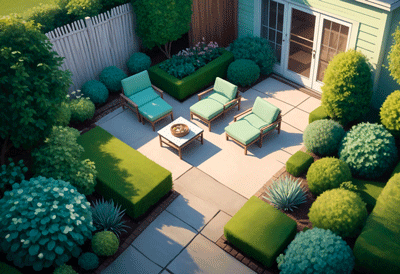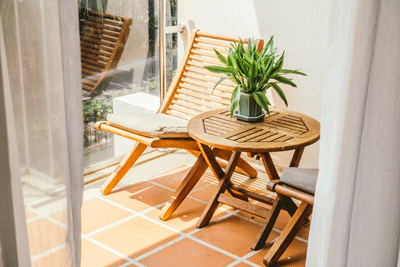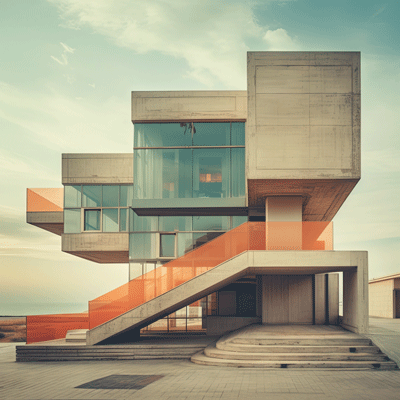
Interior & Exterior Design
Kids Room Design & Decoration
Essential Tips for Designing a Magical and Functional Kids’ Room
A child’s room is more than just a place to sleep; it’s their playground, study, sanctuary, and kingdom. A great design balances practicality with imagination and can adapt as they grow.
1. Prioritize Safety First
This is the most important rule in kids’ room design.
Anchor Furniture: Secure all tall furniture like dressers, bookshelves, and armoires to the wall to prevent tip-overs.
Choose Non-Toxic Materials: Look for low-VOC or no-VOC paints, finishes, and flooring to ensure good indoor air quality.
Cover Electrical Outlets: Use safety plugs or sliding outlet covers.
Secure Cords: Tie up blind and curtain cords well out of reach, or use cordless window coverings.
Soft Edges: For younger children, use corner guards on sharp furniture edges.
Rug Grips: Ensure area rugs have a non-slip pad underneath to prevent slips and falls.
2. Design for Growth and Flexibility
Kids change quickly, and their room should be able to keep up.
Choose a Adaptable Color Scheme: Instead of painting a themed mural that a toddler will outgrow, use neutral or soft colors on the walls (e.g., light grey, creamy white, soft green) and bring in theme, color, and personality through easily changeable items like bedding, rugs, wall decals, posters, and accessories.
Invest in Convertible Furniture: A crib that converts to a toddler bed, or a daybed that can last through the teen years, offers great long-term value.
“Big Kid” Furniture from the Start: Choose a classic, simple dresser or bookshelf that will work for a 5-year-old and a 15-year-old.
3. Create Distinct Zones
Even in a small room, defining different areas helps with organization and routine.
Sleeping Zone: The bed should be the focal point. Create a cozy, calming atmosphere here.
Play Zone: Dedicate a specific area for toys, ideally with a soft rug or play mat. This helps contain the mess.
Study/Creative Zone: As your child grows, a small desk and chair for drawing, homework, or reading becomes essential. Good task lighting is key here.
Storage Zone: Ample, accessible storage is critical for every other zone to function.
4. Maximize Smart and Accessible Storage
The key to a tidy(ish) room is making clean-up easy.
Low and Open Shelving: Use low shelves or cubbies for books and toys. This allows children to see their options and access them independently. Bins and baskets are great for coralling smaller items.
Label Everything: Use picture labels for pre-readers and word labels for older kids. This teaches organization and makes it clear where everything belongs.
Utilize Vertical Space: As toys get smaller and books get bigger, use taller bookshelves and wall-mounted storage to keep the floor clear.
Under-Bed Storage: This is prime real estate! Use roll-out bins or drawers for storing out-of-season clothes, extra bedding, or toys.
5. Layer the Lighting
Different activities require different types of light.
Ambient Lighting: A ceiling light (like a fun flush-mount or a cool pendant) provides general illumination.
Task Lighting: A dedicated desk lamp for the study zone is a must. A small, sturdy reading lamp by the bed is also great for older kids.
Night Lights: A soft, warm night light provides comfort and safety for middle-of-the-night trips to the bathroom. Plug-in or dimmable options are perfect.
Blackout Curtains/Blinds: Essential for helping young children nap and sleep longer, especially during summer months.
6. Encourage Creativity and Personalization
Let the room reflect your child’s unique personality and interests.
Display Their Art: Use a clip line, a magnetic board, or simple frames to display your child’s artwork. This boosts their confidence and makes the room truly theirs.
Interactive Walls: Consider a chalkboard or whiteboard wall for endless drawing fun, or a magnetic wall for displaying art and photos.
A Reading Nook: Create a special, cozy corner with a canopy, a beanbag chair, and a basket of favorite books to encourage a love of reading.
Involve Them in the Process: Let them choose their bedsheets, a poster, or the color of a bin. Giving them a say makes them feel ownership and pride in their space.
7. Choose Durable and Easy-to-Clean Materials
Kids are messy. Your design choices should be able to handle it.
Flooring: Soft but durable options like cork, vinyl plank, or high-quality carpet tiles are excellent. They are comfortable for play and easy to clean or replace.
Rugs: Choose washable rugs or those made from durable, stain-resistant materials like polypropylene.
Washable Paint: Use a satin or semi-gloss finish on walls and trim, which is much easier to wipe down than flat matte paint.
Washable Covers: For chairs, pillows, and even some storage ottomans, choose removable, machine-washable covers.
Common Kids’ Room Design Mistakes to Avoid
Designing Only for the Present: A room for a 2-year-old will not work for an 8-year-old. Always think a few years ahead.
Over-the-Top Themes: A full Frozen or Spider-Man theme might be loved one year and hated the next. Use accessories for themes, not permanent fixtures.
Ignoring the Floor: The floor is a primary playspace. Make sure it’s comfortable, safe, and warm.
Poor Storage Planning: Having only one large toy box creates a “jumble” where toys get lost and broken. Organized, categorized storage is the goal.
Forgetting About You: Make sure there’s a comfortable place for you to sit for bedtime stories, cuddles, or nursing.
The best kids’ rooms are not just visually appealing but are functional, safe, and full of opportunities for your child to learn, play, and dream.






